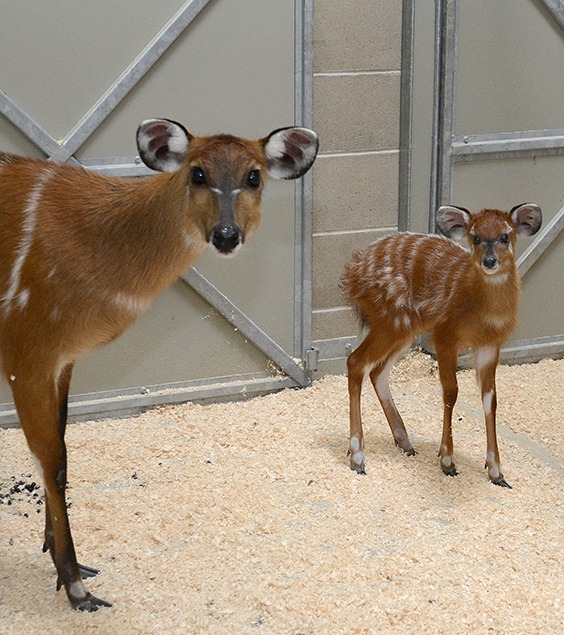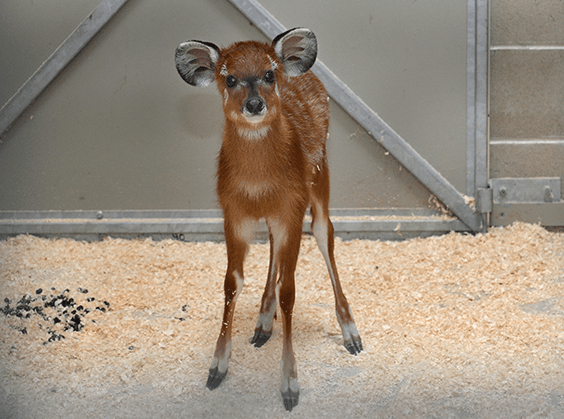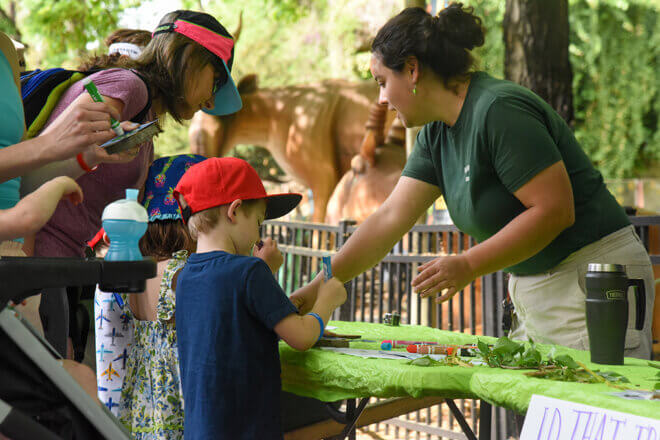The Maryland Zoo in Baltimore is welcoming its newest baby, a male sitatunga calf born on June 28, 2015 at 11:15 am. This is the second male sitatunga calf born this year at the Zoo.
The calf, named Carl by zoo keepers, now weighs about twenty pounds and is strong and healthy. His parents are two-year-old Cricket and eight-year-old Lou. “The baby is nursing very well, and Cricket is being a very attentive first-time mother,” stated Carey Ricciardone, mammal collection and conservation manager at the Zoo. “He has a lot of energy like most sitatunga males, but he is sticking close to his mother right now. She is very protective of him.” Zoo visitors should be able to see Cricket and Carl exploring outdoors in the sitatunga yard closest to the tortoises at various times of the day.

The sitatunga (Tragelaphus spekii) is a species of antelope native to Central Africa. They live in semi-aquatic swamps, marshes and flood plains. Outside of protected areas, sitatunga are vulnerable to over-hunting and habitat loss, as people drain and develop swamp land. Currently, however, sitatunga are not classified as threatened or endangered.
The Maryland Zoo’s sitatunga herd is made up of eight animals, including the new calf, and can be found in two exhibit spaces along the boardwalk in the African Journey section of the Zoo. “Sitatunga young nurse from their mothers from four to six months before becoming independent,” continued Ricciardone. “Sitatunga young separate from their mothers earlier than most antelope with females forming loose herds while males are more solitary.”
The calf’s birth is the result of a recommendation from the Sitatunga Species Survival Plan (SSP) coordinated by the Association of Zoos and Aquariums (AZA). SSPs provide breeding recommendations to maximize genetic diversity, with the goal of ensuring the long-term survival of the captive population and the health of individual animals.






Share this article